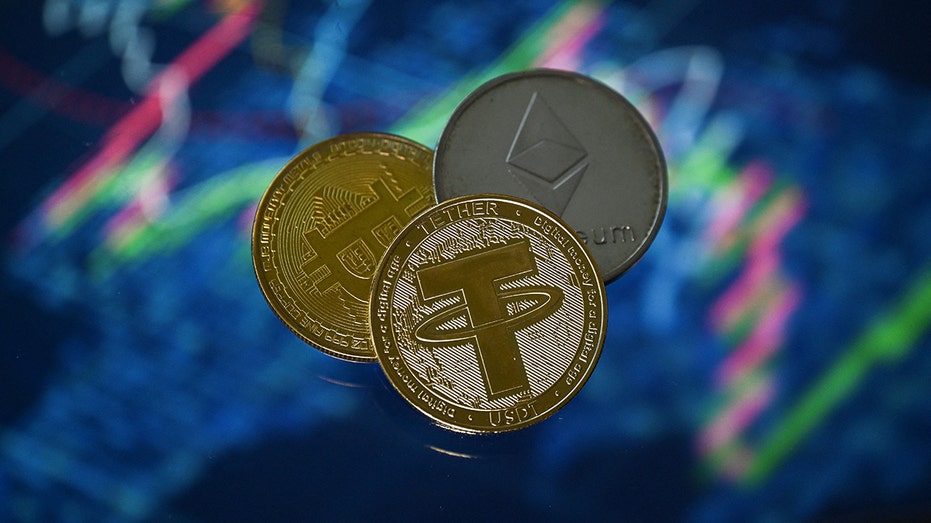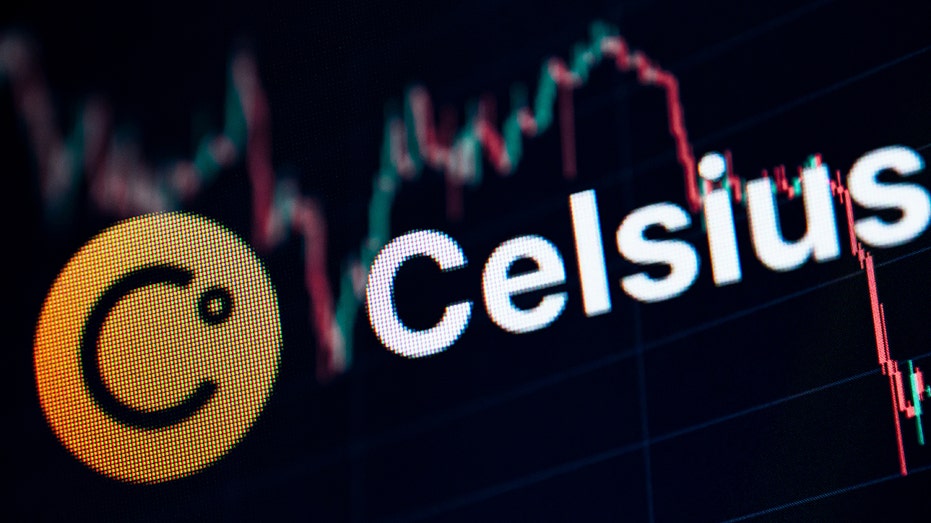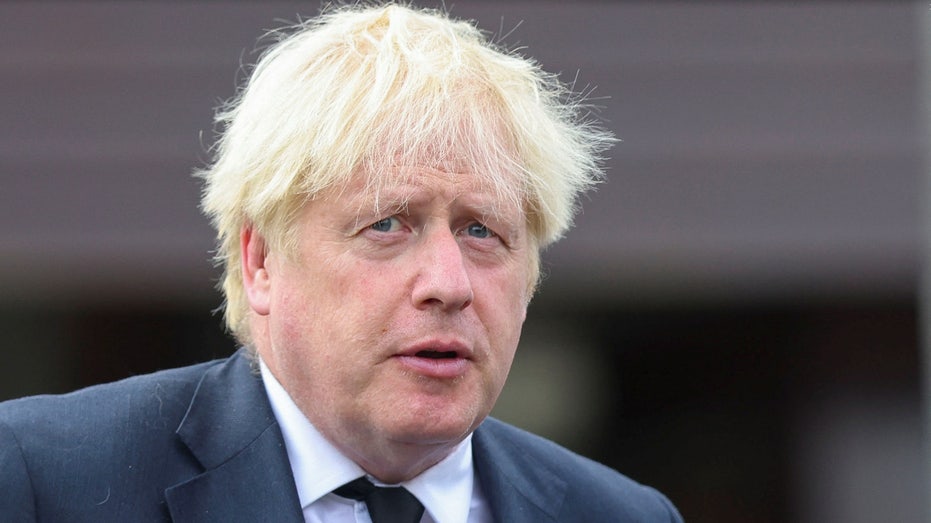The unusual crew behind Tether, crypto’s pre-eminent stablecoin
The stablecoin has become a lucrative business at center of crypto economy
SEC commissioner Hester Peirce: Some crypto failures have nothing to do with the asset
SEC commissioner Hester Peirce discusses the need for regulation in the cryptocurrency space as the Celsius exchange faces ponzi allegations on 'The Claman Countdown.'
Tether Holdings Ltd. operates a $68 billion stablecoin at the heart of crypto’s alternative financial universe. Far more tether trades each day than bitcoin.
Yet the company’s founders and owners are an unusual bunch with scant experience at that scale of finance. One founder was a child actor turned early crypto investor. Another founder and top shareholder practiced plastic surgery before turning to electronics importing and then crypto. One newer owner has gone deep into British politics.
A group of four men has controlled 86% of Tether Holdings, according to a cache of documents reviewed by The Wall Street Journal. The documents date back several years, but provide the clearest picture yet of the people behind what is by far the biggest stablecoin.

An illustration picture taken in London on May 8, 2022, shows gold plated souvenir cryptocurrencies including Bitcoin, Tether, and Ethereum. (JUSTIN TALLIS/AFP via Getty Images / Getty Images)
Tether has survived the crypto carnage of the past year. Like other stablecoins, its value depends on a simple notion: Investors expect that Tether the company will swap $1 for one tether, or one tether for $1. Central to that is the assertion that Tether has enough reserves to redeem all the roughly 68 billion tethers in existence. Tether’s assets slightly exceed the value of tethers circulating, so it has only a thin cushion against losses, according to the company’s most recent disclosures.
COINBASE SHARES SURGE AFTER LAWSUIT TOSSED BY JUDGE
Tether’s model makes the company similar to a traditional financial institution such as a bank or a money-market fund. It requires sophisticated portfolio management and trading strategies. More important, it must instill confidence among its customers. If they believe their money is at risk, there could be a run on the cryptocurrency.
About $83 billion in tether circulated at its peak, and nearly $68 billion are currently available to the market today, according to data from CoinMarketCap. Rising interest rates have likely created a multibillion-dollar windfall for Tether’s owners, but volatility in the crypto market raised questions about tether’s stability. The value of the cryptocurrency fell well below the promised dollar level last year. On Nov. 10 one unit of tether hit a low of 97.7 cents, and on May 12, it hit 95.6 cents.
One reason for concern among investors is that Tether made loans with tether. Instead of exchanging one tether for another currency worth $1, it lent tether to entities that promised to pay $1 for each tether. If borrowers can’t pay back their loans, tether wouldn’t be able to trade all tethers in circulation for dollars.
Tether says its loans are safe because they are overcollateralized. The final report by the court-appointed examiner in the bankruptcy of crypto lender Celsius shows how difficult that would be to manage.
In May 2021, Tether had lent Celsius tether worth $1.8 billion, collateralized by $2.6 billion of Celsius’s crypto assets, the report said. Tether had to manage the risk of the loan as crypto prices fell. Eventually the loan was liquidated and Celsius suffered a loss. In addition to lending to Celsius, Tether received loans from the company that were twice its credit limit while owning 7.73% of its equity, the report said.

14 June 2022, Baden-Wuerttemberg, Rottweil: The logo of the crypto company Celsius is seen on the screen of a computer in an office. (Photo: Silas Stein/ (Photo by Silas Stein/picture alliance via Getty Images) / Getty Images)
A Tether spokesperson said, "Tether never borrowed from Celsius."
Tether declined to comment on the company’s shareholders or how the company is managed. Its executives didn’t respond to a request for comment.
NEW YORK WOMAN CHARGED WITH SENDING CRYPTOCURRENCY TO SYRIAN TERRORIST GROUP
The firm releases little information about itself, much like the rest of the crypto industry. It has never disclosed its ownership structure, the details of how its assets are managed and how it would prevent a wave of redemptions from toppling the cryptocurrency. When questions were raised by investors about its lending programs, it refused to disclose the borrowers or the collateral they posted. Secrecy, lack of experience and little regulation have emerged as risks for investors at other crypto companies.
Weaknesses in the way Tether is managed were exposed in two government investigations. The company and several related crypto businesses paid a combined $61 million in 2021 to settle probes by the New York Attorney General and the Commodity Futures Trading Commission.
The investigations showed that Tether had made several public misrepresentations about the assets backing the stablecoin.
Tether didn’t admit or deny the findings of the investigations. Since then, Tether has boosted disclosure about its holdings, though the company still releases less information than comparable financial firms.

(FILES) In this file photo taken on June 17, 2014, in Washington, DC shows bitcoin medals. ((Photo credit should read KAREN BLEIER/AFP via Getty Images) / Getty Images)
Tether grew out of separate efforts led by former plastic surgeon Giancarlo Devasini and Brock Pierce, a longtime entrepreneur and crypto evangelist who played a young hockey player in The Mighty Ducks movies.
Mr. Pierce’s earlier company, Internet Gaming Entertainment, dealt in pre-bitcoin digital currency from videogames and was later run for a time by Steve Bannon, who subsequently served as White House chief strategist. By 2014, Mr. Pierce had co-founded Realcoin, which sought to create a more stable cryptocurrency pegged to and backed by the dollar. Mr. Bannon didn’t reply to a request for comment.
2022 BIGGEST YEAR EVER FOR CRYPTO HACKING, REPORT SAYS
Mr. Pierce and Mr. Devasini joined forces. Tether Holdings Ltd. was incorporated in the British Virgin Islands in September 2014. Mr. Pierce soon left the company and Mr. Devasini is now the chief financial officer of Tether.
"The U.S. would be better off if people like me, patriotic Americans, still tightly held the ownership of this business," Mr. Pierce said in an interview. "My group of shareholders, probably $6-$10 billion of value I gave up. Was that really the right call with the benefit of hindsight? I don’t know."
Mr. Devasini, an Italian citizen who went by the internet handles "Merlin" and "urwhatuknow," helped develop Bitfinex, which says it was one of the first cryptocurrency exchanges. The firm describes its vision as: "To be the leading global advocate of freedom by accelerating a transition to a more open and fair world."
Tether and Bitfinex share top executives, who are the majority owners of the stablecoin firm.
Mr. Devasini owned roughly 43% of Tether in 2018, according to the documents. The chief executive of both Bitfinex and Tether is Jean-Louis van der Velde and the two companies’ general counsel is Stuart Hoegner. Each owned about 15% of Tether in 2018, according to the documents.
Before Bitfinex and Tether, Mr. Devasini and Mr. van der Velde were both electronics importers and resellers. People who have interacted with Mr. Devasini say he is the main decision maker at Tether and Bitfinex. Mr. van der Velde, who also goes by Jan Ludovicus van der Velde, is Dutch but lived most of his life in Asia.
Mr. Pierce said he held conversations about buying back some of his ownership stake in Tether in 2017. Tether executives discussed how Mr. Pierce’s connections to Mr. Bannon could benefit the company, according to emails reviewed by the Journal. Mr. Devasini vetoed the effort, the emails show. A venture capital fund managed by Blockchain Capital, a firm that was co-founded by Mr. Pierce, did eventually buy a small stake in Tether.
Mr. Hoegner, a Canadian who goes by @bitcoinlawyer on Twitter, has been general counsel at Bitfinex since 2014. Before that, Mr. Hoegner’s practice revolved around online gambling and cryptocurrency. He was the deputy general counsel and director of compliance at Excapsa Software, a poker software company that later paid $15 million to release it from claims relating to software-enabled cheating that occurred while he was in those roles.
In addition to sharing several owners and executives, Tether and Bitfinex were intertwined in other ways. In 2016, Bitfinex was hacked, losing bitcoin that at the time was worth $65 million.
The hack led to Tether getting its fourth major owner, a businessman with British and Thai citizenship known as Christopher Harborne in the U.K. and Chakrit Sakunkrit in Thailand. The four men together owned roughly 86% of Tether through their own holdings and another related company, the documents show.
Bitfinex spread the loss from the hack among its customers, who took a 36% haircut on their holdings and were issued a new token called BFX that functioned as a kind of IOU for the lost deposits.
As a big Bitfinex user, Mr. Harborne received many of the new tokens, then bought up more at steep discounts, according to a person familiar with the matter. The BFX tokens were converted into equity of Bitfinex’s parent company. Through a series of transactions with Tether and its related companies, Mr. Harborne came to own roughly a 12% stake in Tether, according to the documents and the person familiar with the matter. His stakes in Tether and its related parties were held in the Sakunkrit name, the documents show.
Tether appears to have become a lucrative investment, due largely to rising interest rates. If Tether’s nearly $68 billion asset portfolio is paying 4.5% a year, roughly what short-term Treasurys are yielding, the company is taking in about $3 billion a year. Tether coins pay no interest.
Shortly after taking his stake in Tether, Mr. Harborne became a significant financial force in British politics. He donated £14.8 million directly to parties, with most of that going to Nigel Farage‘s Brexit Party, according to data from the U.K. Electoral Commission.
Early last year, Mr. Harborne increased his giving to the Conservative party. Soon after, the ruling Conservative government announced a plan to "make the U.K. a global hub for cryptoasset technology" by legislating stablecoins for payments and creating conditions for stablecoin issuers like Tether to operate and invest in the UK.

Former British Prime Minister Boris Johnson attends the funeral of Northern Ireland's former First Minister David Trimble in Lisburn, Northern Ireland, Aug. 1, 2022. (REUTERS/Johanna Geron / Reuters Photos)
Recent parliamentary disclosures revealed that in November Mr. Harbone donated £1 million to former U.K. Prime Minister Boris Johnson in the largest donation to an individual politician in British history.
CLICK HERE TO GET THE FOX BUSINESS APP
Mr. Harborne also worked in aviation. An amateur pilot himself, in 2008 he crashed a plane into his neighbor’s garden after attempting to land on a private landing strip at his wife’s home, according to a U.K. investigation into the incident.
He started AML Global Ltd., an independent aircraft refueling agent. Since 2018, AML has received about $39 million in contracts from the U.S. Department of Defense according to GovTribe, a website that tracks U.S. government contracts.




















